Care and Maintenanace
Regular Maintenance
Extend the life and preserve the appearance of your Southern Home Outdoor furniture by following this straightforward care routine. Gently dust the surfaces to keep the finish looking its best. For a deeper clean, use a soft-bristle brush along with a mixture of mild soap and water. Rinse thoroughly with clean water and dry completely. Our durable materials can be cleared as often as needed without damaging the fabrics.
- Furniture Covers: Think of our expertly crafted furniture covers as protective outerwear for your outdoor dining and lounge pieces, designed to help maintain their appearance and durability over time. They’re especially useful in regions with extreme temperatures or prolonged exposure to moisture and salty air.

CARE AND CLEANING GUIDE:
Natural Teak: Teak is a naturally durable hardwood known for its strength and resilience outdoors. Its dense structure and high natural oil content make it particularly well suited for enduring sun, moisture, and temperature changes. Our Natural Teak is left untreated, allowing the wood’s raw beauty to stand out. Through careful hand-finishing, the surface is smoothed to bring out its natural luster and highlight the grain. When left exposed to the elements, this finish will gradually transition to a soft, silver-gray patina. This change in color is cosmetic and does not compromise the quality or lifespan of the furniture. If you prefer to retain the wood’s original color, regular maintenance with teak-specific products, like those from Golden Care, can help clean and seal the surface. In regions with high humidity or frequent rain, the wood may shift slightly, sometimes resulting in fine surface cracks or raised grain. These are natural changes that occur as the wood adjusts to outdoor conditions and will stabilize over time. Some new teak pieces may show light oil markings, which can be gently cleaned with water. Oils from the wood may also occasionally transfer onto cushions. These marks are not harmful and can be treated using a soft brush with a mild cleaner like Simple Green or OxiClean.
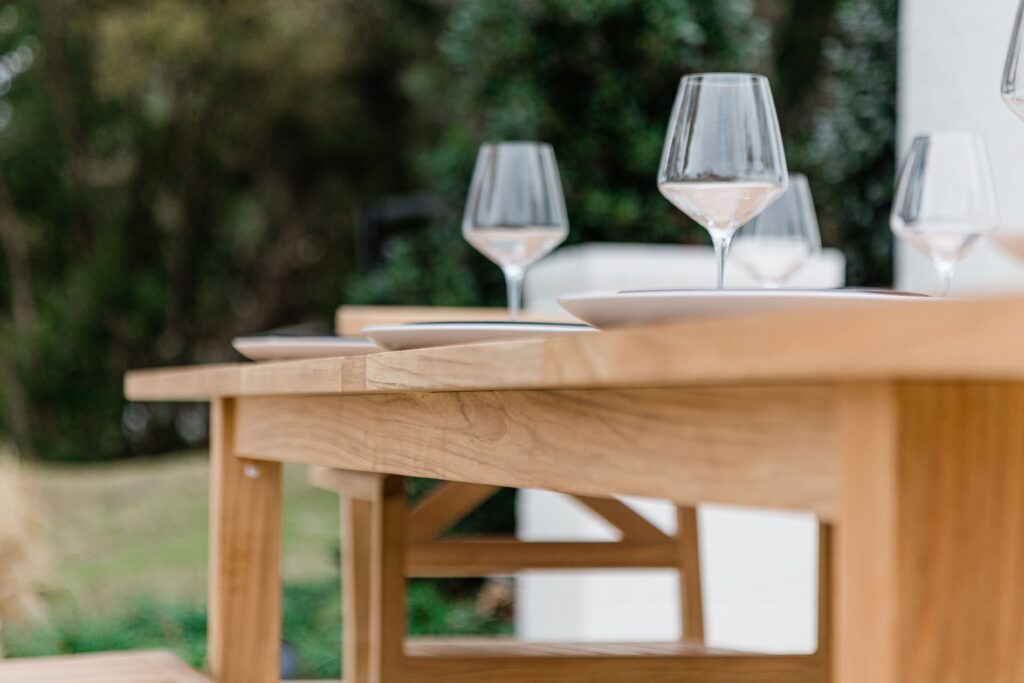
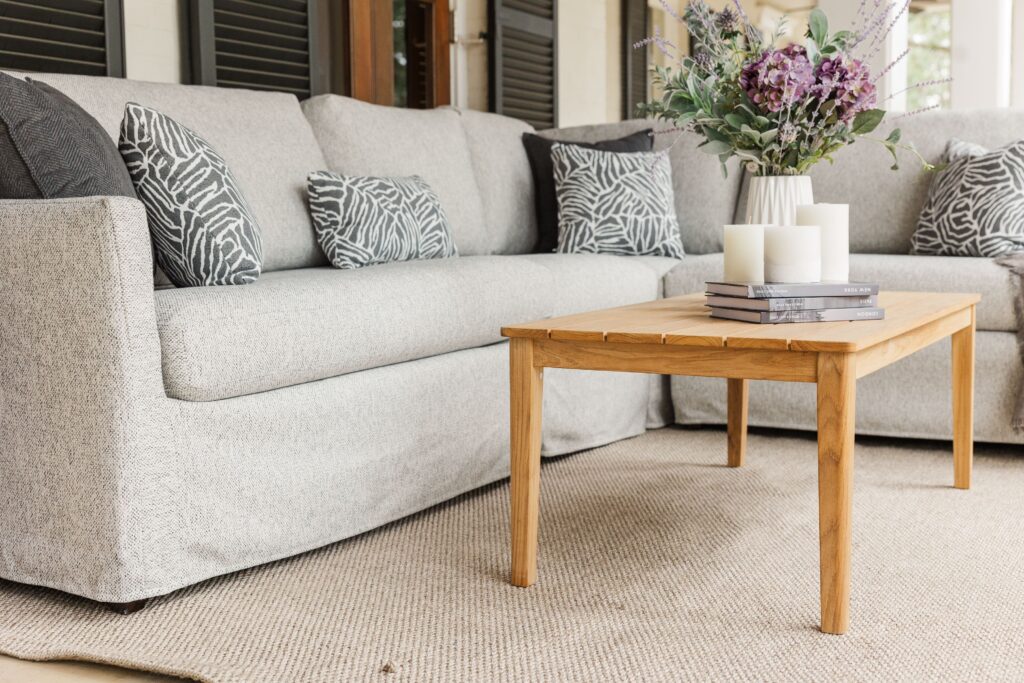
Fabric: Our high-performance indoor/outdoor fabrics are made to be both beautiful and durable, with easy upkeep in mind. For regular cleaning, use a mild soap mixed with water and rinse thoroughly with clean water. Allow cushions to dry completely by standing them upright in a well-ventilated area. To treat small stains, gently scrub with a soft brush and mild detergent. For more stubborn spots or mildew, use a reputable cleaner specifically formulated for outdoor furniture. Be careful not to let strong commercial cleaners come into contact with the fabric, as they may cause fading or discoloration. Avoid using bleach on printed acrylics and steer clear of solvent-based cleaners on woven vinyls or blended weaves, as these can break down the fibers. Chlorine-based products should also be avoided to protect the integrity and appearance of the fabric.
Woven Furnishings: Our woven pieces are crafted using durable, weather-resistant high-density polyurethane, designed to withstand the demands of outdoor living. For everyday cleaning, use a soft cloth or sponge with a mild soap and water solution to gently remove dirt or stains. Rinse thoroughly with clean water and allow it to dry completely.
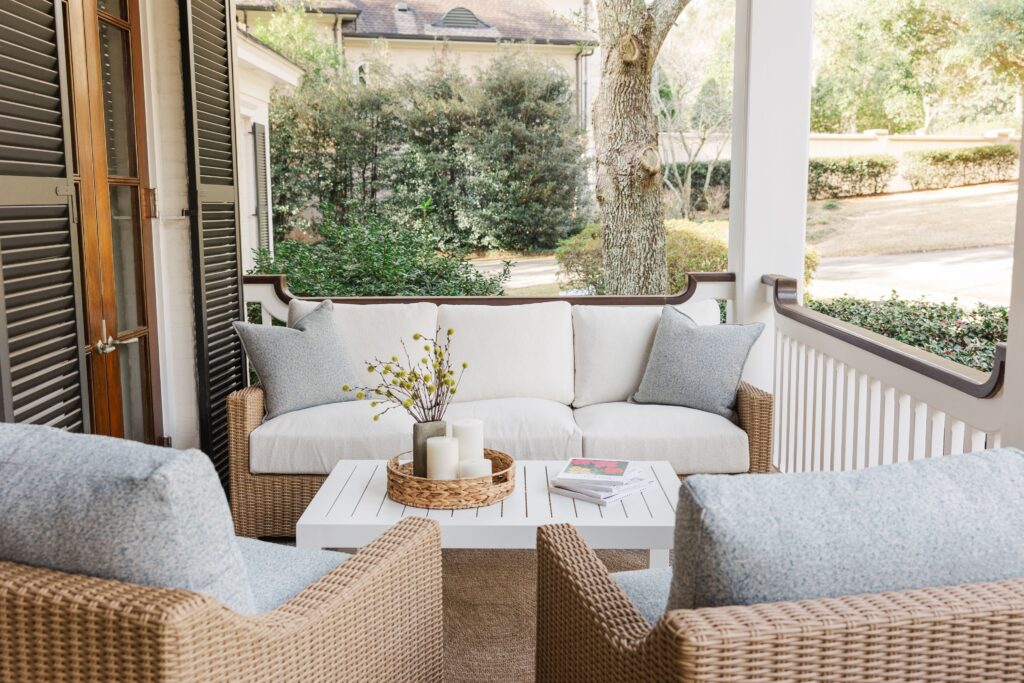
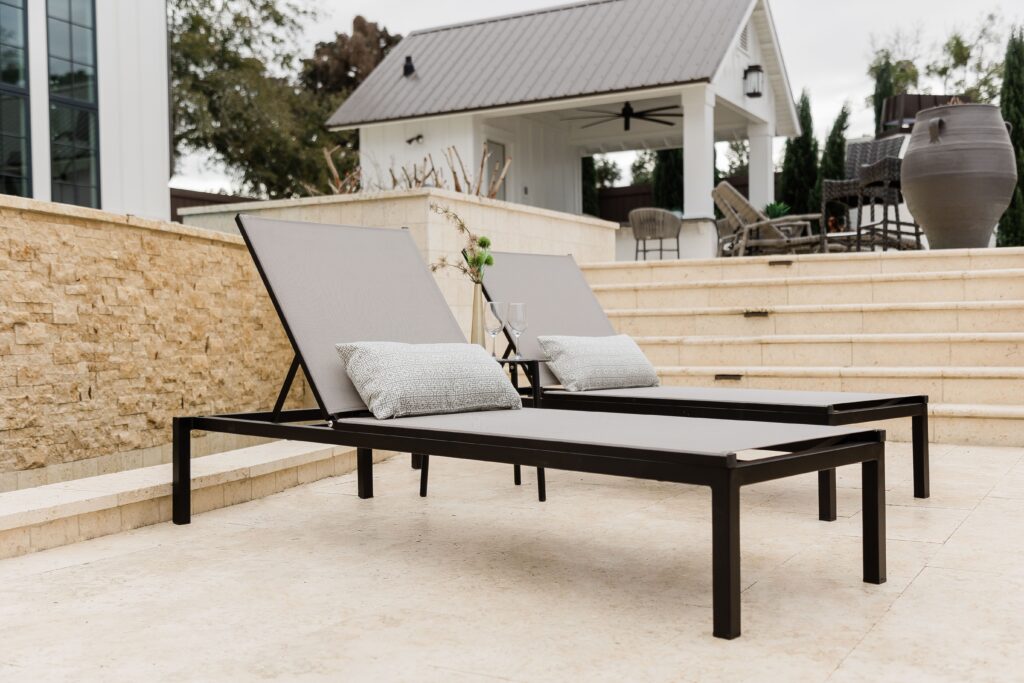
Sling: To remove light stains, clean the surface using a mix of mild soap and water, followed by a thorough rinse and complete drying. For more stubborn marks, use a trusted outdoor furniture cleaner and protectant designed for heavier-duty cleaning.
Stone Tops: Our stone tabletops are thoughtfully crafted for outdoor residential environments. To maintain their appearance, clean spills from wine, coffee, soda, or other organic substances promptly using a mild detergent and water. When using a cover, allow for ventilation between the surface and the cover to prevent moisture buildup and support airflow. This helps avoid condensation and potential damage.
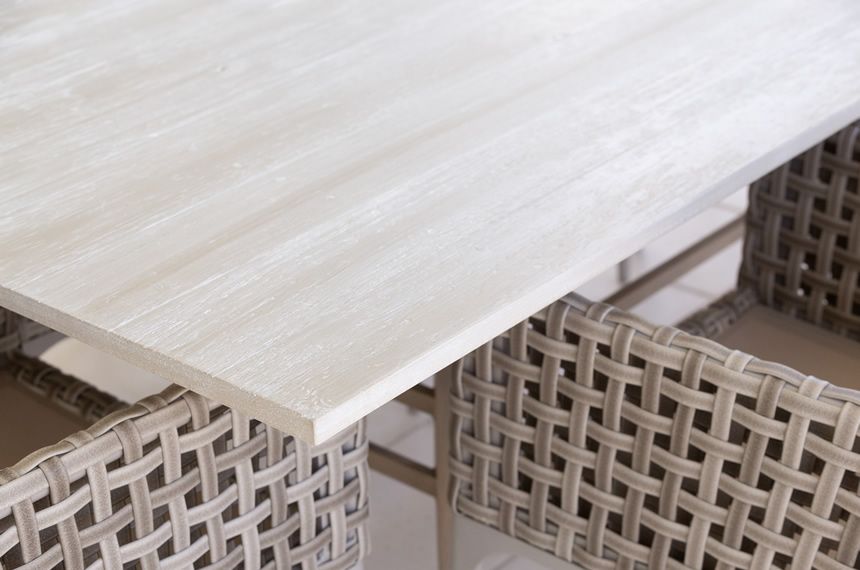
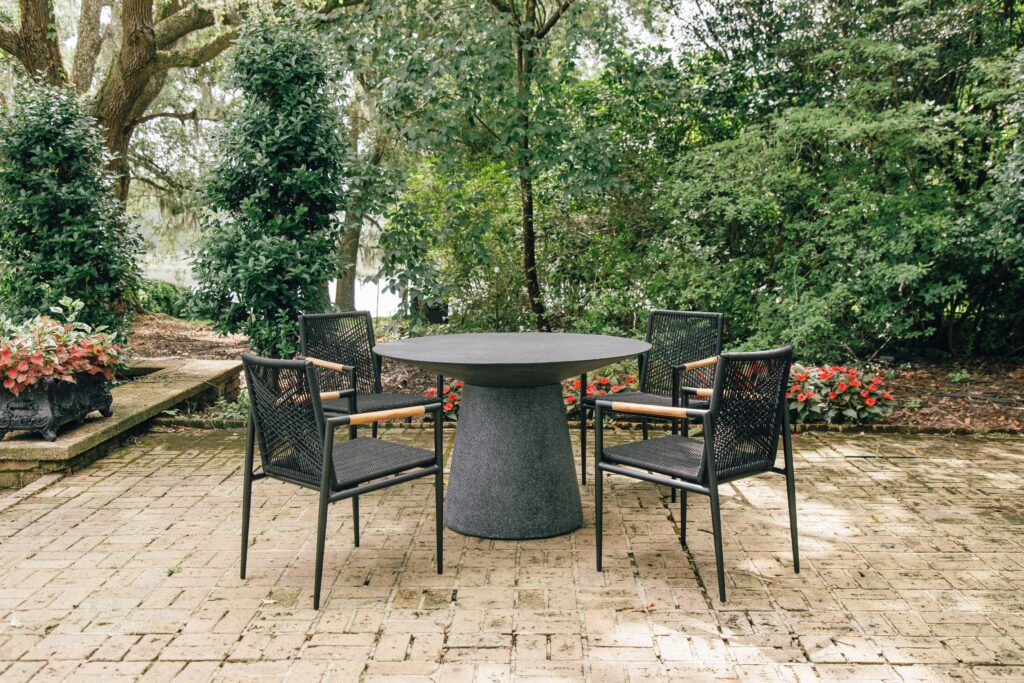
Fiberglass Concrete: To keep surfaces clean and prevent grease or stain buildup, wash them regularly using a soft-bristle brush or non-abrasive sponge. Mix 1/4 cup of mild, biodegradable liquid soap with one gallon of lukewarm water (approximately 100°F / 38°C) for general cleaning. For tougher grime or deeply embedded dirt, a solution of equal parts white vinegar and water can help lift residues. After cleaning, rinse thoroughly with fresh water to remove any remaining soap or vinegar.
Rope: For routine cleaning of rope, start by brushing off loose dirt or vacuuming the surface. Mix a mild detergent with warm water and apply it to the material, letting it soak briefly. Use a sponge or soft-bristle brush to gently clean, then rinse thoroughly with clean water. Let the material air dry completely. For more stubborn spots, use the same mild soap solution. Gently blot the stain with a soft cloth or sponge, working from the edges toward the center. Avoid rubbing, which may damage the fibers. After the stain lifts, rinse away any soap residue and blot dry with a clean towel. Allow the air to dry fully. Avoid using stain removers, as they may cause damage.
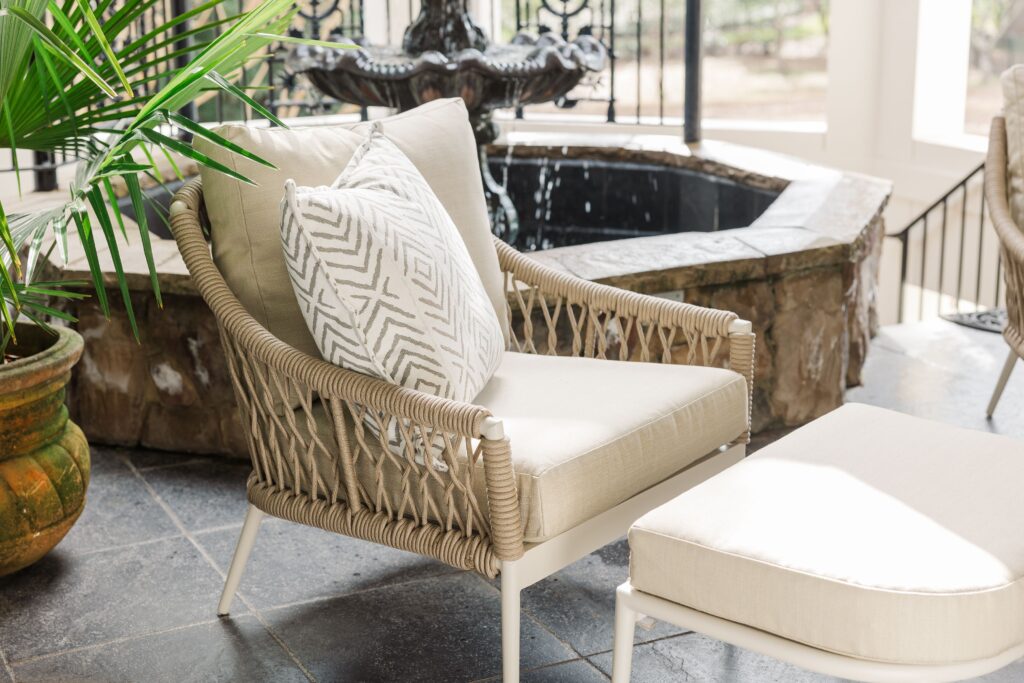
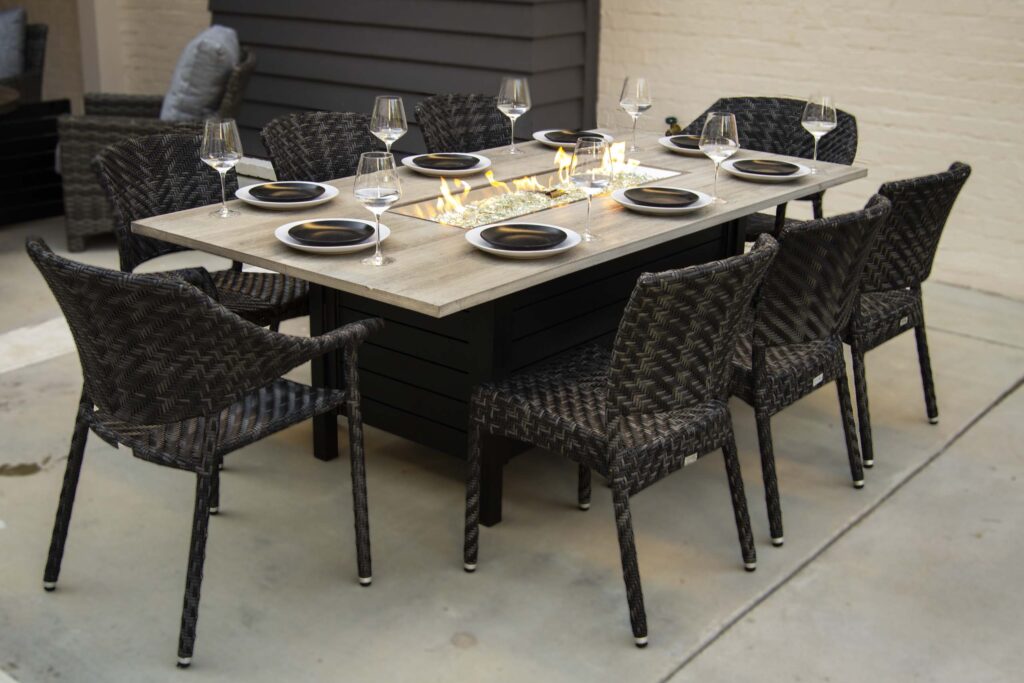
Fire Tables: Before using your Fire Table for the first time, and at least once per year, it should be thoroughly inspected and cleaned by a qualified service professional. If any part is damaged or malfunctioning, it must be replaced with a certified component. Do not attempt to modify or tamper with the Fire Table, as doing so is unsafe and will void all warranties. In colder climates or during wet seasons, performance may be impacted by weather conditions. To help protect the unit, use a breathable, weather-resistant cover when the Fire Table is not in use. Prolonged exposure to rain or moisture may interfere with proper operation. If the unit becomes wet, allow it to fully dry out before igniting. Important: If using a combustible cover, always remove it before lighting the Fire Table to avoid serious safety risks. Over time, soot may collect on the surface of any glass components during regular use. To clean, remove the glass, rinse with water, dry thoroughly, and reinstall. Stainless steel surfaces may gradually change color when exposed to high heat, often developing a golden or bronze tint. This discoloration is a normal result of use and does not affect the functionality of the appliance.
